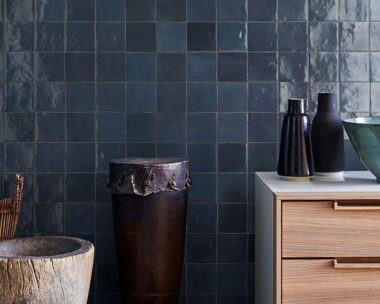I’ve yet to meet anyone who doesn’t have some sort of issue with their lawn. Dog circles, grass grubs, Onehunga weed, moss, kikuyu, dead bits, wet bits, dry bits… the problems are endless.
Yet there we are, struggling, slaving, and spending our hard-earned cash farming what must surely be the most useless crop on the planet.
Do we really need all that lawn, or is it just our default landscape setting? After all, lawns are pretty much ecological dead zones. The wildlife they support is microscopic compared to forest, native bush, prairie, garden and swamp, so it stands to reason that the more lawn you replace with, say, blooming ground covers, the better your contribution to the environment.

Pratia (lobelia) is considered by many to be the nearest thing you can get to a weed without it actually being one. It’s a good choice because it hugs the ground, it’s fine to walk on, it produces flowers, and creeps along at about the same pace as the lawn mower. I planted about eight of them, along with half a dozen selliera plants, but the pratia has overtaken the selliera as well as the lawn so be aware that it’s very vigorous.
They’re already on to this in a big way in the US, where some cities pay residents by the square foot to remove lawn and replace it with drought-tolerant native landscapes or permeable hardscapes. In addition to creating more sustainable landscapes, this will have an impact on the estimated 23 million tonnes of lawn clippings a year that Americans toss into landfills. And last, but not least, petrol-fuelled lawn equipment emits pollution – just like cars.
The Partner, who is trying to turn our half acre of kikuyu into a bowling green, will kill me for this, but if you’re determined to keep your lawn, let it grow longer. That way it’ll develop a better root system, and the longer foliage will shade the soil and conserve moisture. Once you get used to it, you’ll probably come to like the shaggy style and, if you want, you can mow shorter pathways through it and add paving stones for a designer look.

The gardener at this patch can relax because he’s given up on the perfect lawn, leaving the grass long and casual.
Next, earmark any patch of lawn that’s not up to scratch as an area for redevelopment as a butterfly and bee resort. Remove the turf, till the surface, then seed or plant it with flowering herbs and ground covers. If you like it, you can slowly extend. In a country town not far from ours, a few residents have even replaced the grass on the road verges with herbs and flowers and it’s a vast improvement.
There’s a trick, though. If you’re going to embark on a lawn replacement programme, you need to choose plants that will do better in your conditions than the lawn did. Eco-source plants that are adapted to current local conditions and select a combination of colours, sizes and textures that look the most interesting.

The time, effort and expense that has gone into this ‘perfect’ lawn has still not managed to overcome common issues such as dead patches.
If you’re a tidy Kiwi, you can use edging to create a finite separation between grass and plants. Various edging materials can be used, including plastic, timber and metal. Use a professional for installation, if you want a slick look. When the job’s done well, you shouldn’t even notice it. Otherwise, just let your ground covers, flowers and herbs creep out onto the existing lawn for a carefree (some might say careless), random style.
I’ve chosen this look in the vain hope that The Partner won’t actually notice that the lawn is shrinking.
Lavender buzz
Some plants lend themselves beautifully to lawn replacements, and my favourites are always those that either grow really quickly, or are easy to propagate.

Lavender and grevillea are high on my list and, despite the fact that they’re dry garden plants, they’ve taken to our subtropical garden like ducks to water. Every time I walk past the lawn replacement project, I break off three or four bits and stick them into the ground, thereby extending the replacement area with virtually no effort. So far the strike rate is about 70% – and now I can hardly get near the place for bees.
Sprinkle of herbs
Thyme is an easy cover to start with. The most vigorous is probably lavender thyme, but why not plant a combination of different ones and see which works best. Add camomile, catmint, oregano and prostrate rosemary.
Most will do well in well-drained soil and full sun or part shade. With a good start they don’t need much attention. Plant in odd numbers in a random pattern – they’ll fill in the space more quickly.




